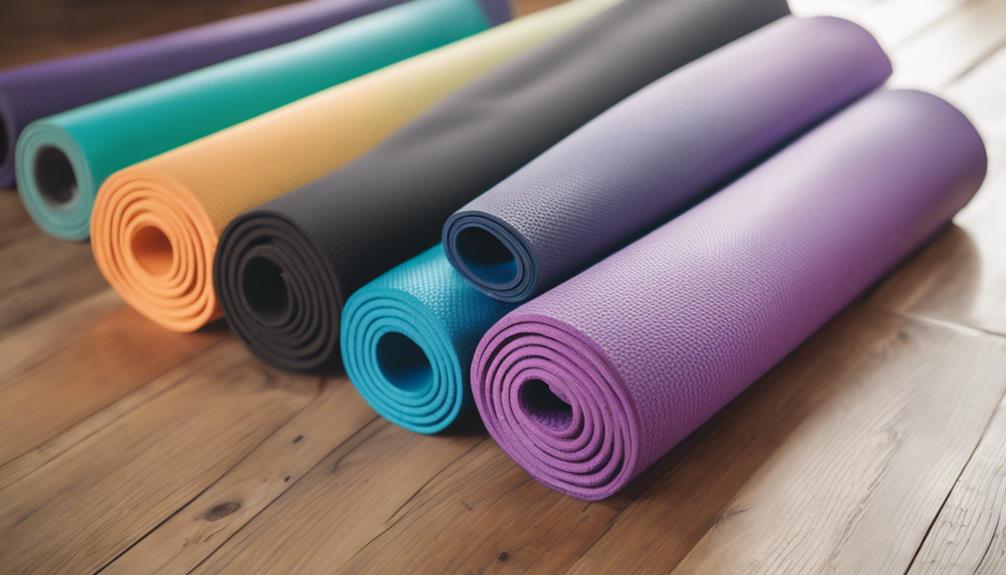How To Pick Yoga Mat

Choosing the right yoga mat is essential for any practitioner, whether you are a beginner or an experienced yogi. With the multitude of options available on the market, it can be overwhelming to decide which mat will best suit your practice. In this guide, we will explore how to pick a yoga mat, examining key factors such as material, thickness, texture, and portability. By the end of this post, you will have the knowledge needed to make an informed decision and find a mat that enhances your yoga experience.
Understanding Yoga Mat Materials
One of the first steps in how to pick a yoga mat is understanding the materials used in their construction. The most common materials include PVC, TPE, natural rubber, and cotton. PVC mats are durable and provide good grip but may not be environmentally friendly. TPE mats are a newer option that is more eco-friendly and offers a good balance of comfort and grip. Natural rubber mats are biodegradable and provide excellent traction but can be heavier and may not be suitable for those with latex allergies. Cotton mats are great for gentle practices and can be easily washed but lack the grip needed for vigorous workouts. Understanding these options is vital when considering how to pick a yoga mat that aligns with your values and needs.
The Importance of Thickness in Yoga Mats
Thickness is another crucial consideration when learning how to pick a yoga mat. Mats typically range from 1/16 inch (1.5 mm) to 1/4 inch (6 mm) thick. A thinner mat provides better stability and connection to the ground, making it ideal for balance poses and standing postures. However, if you have sensitive knees or practice on hard surfaces, a thicker mat may offer additional cushioning and comfort. It’s essential to evaluate your personal preference and the types of yoga you practice to determine the appropriate thickness that will support your practice.
Texture and Grip: What to Look For
Grip is a vital feature of any yoga mat, especially for those who engage in vigorous styles such as Vinyasa or Ashtanga yoga. When considering how to pick a yoga mat, pay attention to the texture of the surface. Mats with a textured surface can provide the traction needed to prevent slipping during poses. Some mats have a sticky surface that enhances grip, while others may feature raised patterns or ridges. Test the mat’s grip by trying a few poses in the store or reading reviews from fellow yogis to find out how well it performs in sweaty conditions.
Weight and Portability: Finding the Right Balance
For many yogis, especially those who attend classes outside of their home, portability is a significant factor when learning how to pick a yoga mat. If you plan on traveling with your mat, look for lightweight options that are easy to carry. Some mats come with carrying straps or bags, which can enhance convenience. However, keep in mind that lighter mats may sacrifice some durability or cushioning. Finding a balance between weight and the features you desire is essential for ensuring that your mat fits seamlessly into your lifestyle.
Size Matters: Finding the Right Dimensions
When considering how to pick a yoga mat, the size of the mat is another important factor. Standard yoga mats measure about 68 inches (173 cm) long and 24 inches (61 cm) wide, but taller individuals may require longer mats to accommodate their height. Additionally, some mats come in extra-wide options for those who prefer more space during their practice. Ensure that the mat you choose offers enough room for your body to move comfortably and safely without feeling restricted or cramped.
Eco-Friendliness: Making Sustainable Choices
As the yoga community continues to grow, many practitioners are becoming more conscious about the environmental impact of their choices. If sustainability is important to you, consider how to pick a yoga mat that aligns with eco-friendly practices. Look for mats made from natural, biodegradable materials, such as natural rubber or organic cotton. Also, consider brands that prioritize ethical manufacturing processes and sustainable sourcing. By choosing an eco-friendly mat, you can practice in a way that reflects your values and reduces your ecological footprint.
Price Range: Finding Quality Within Your Budget
Yoga mats come in a wide range of prices, from budget-friendly options to high-end specialty mats. When learning how to pick a yoga mat, it’s important to set a budget that reflects your needs and intentions. While you don’t need to break the bank to find a quality mat, investing in a durable, well-made mat can enhance your practice and longevity. Research different brands, read reviews, and consider the features that matter most to you before making a purchase. Remember, a higher price does not always guarantee better quality, so be sure to evaluate your options carefully.
Testing Before You Buy: The Best Approach
Finally, one of the best tips for how to pick a yoga mat is to test it out before making a purchase. Many yoga studios or fitness stores allow you to try mats in person, which can help you determine the feel and grip of different options. If you cannot test the mat in-person, look for retailers with generous return policies. This way, if the mat doesn’t meet your expectations after a few practices, you can return it for a refund or exchange. Ultimately, finding the perfect yoga mat is about personal preference, so give yourself the opportunity to find the one that feels just right for you.
In conclusion, knowing how to pick a yoga mat involves considering multiple factors such as material, thickness, grip, portability, size, eco-friendliness, and price. By understanding your individual needs and preferences, you can select a mat that enhances your yoga practice and supports your journey on the mat. Take your time, do your research, and enjoy the process of finding your perfect yoga companion.Is Yoga Good For FlexibilityWhat Yoga Poses Help With Gas